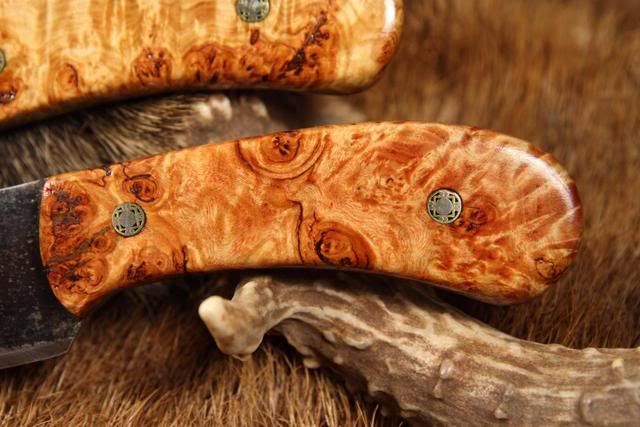If you are wanting to drill holes in one of those laminated steel knife tangs, clamp the blade in the BARE jaws of a bench vise. This allows the jaws to serve as a heat sink. Then, use a propane or acetylene torch to heat the tang red hot. Drill the holes with standard drill bits while the tang is red hot in color. You may need to draft an extra pair of hands to hold the torch to the tang while you control the drill.
CAUTION; THE HEAT SOFTENS THE HARDENED STEEL SO THAT THE DRILL WILL CUT THROUGH IT FAST, AND THE CUTTINGS WILL RESEMBLE WHAT YOU SEE WHEN DRILLING HOLES IN BALSAW WOOD. You don't want to lose your balance and fall against that red hot tang.
When the hole is drill you can just let the tang air cool, or drop the blade into water. The vise won't even get warm to the touch, BTW.
Use of the vise as a heat sink protects the blade from both discoloration, and annealing. With very small blades, I have used vise grips to hold the work and serve as the heat sink. Obviously, Center punch the tang for the holes you are going to drill BEFORE you heat the tang. :thumbsup:






